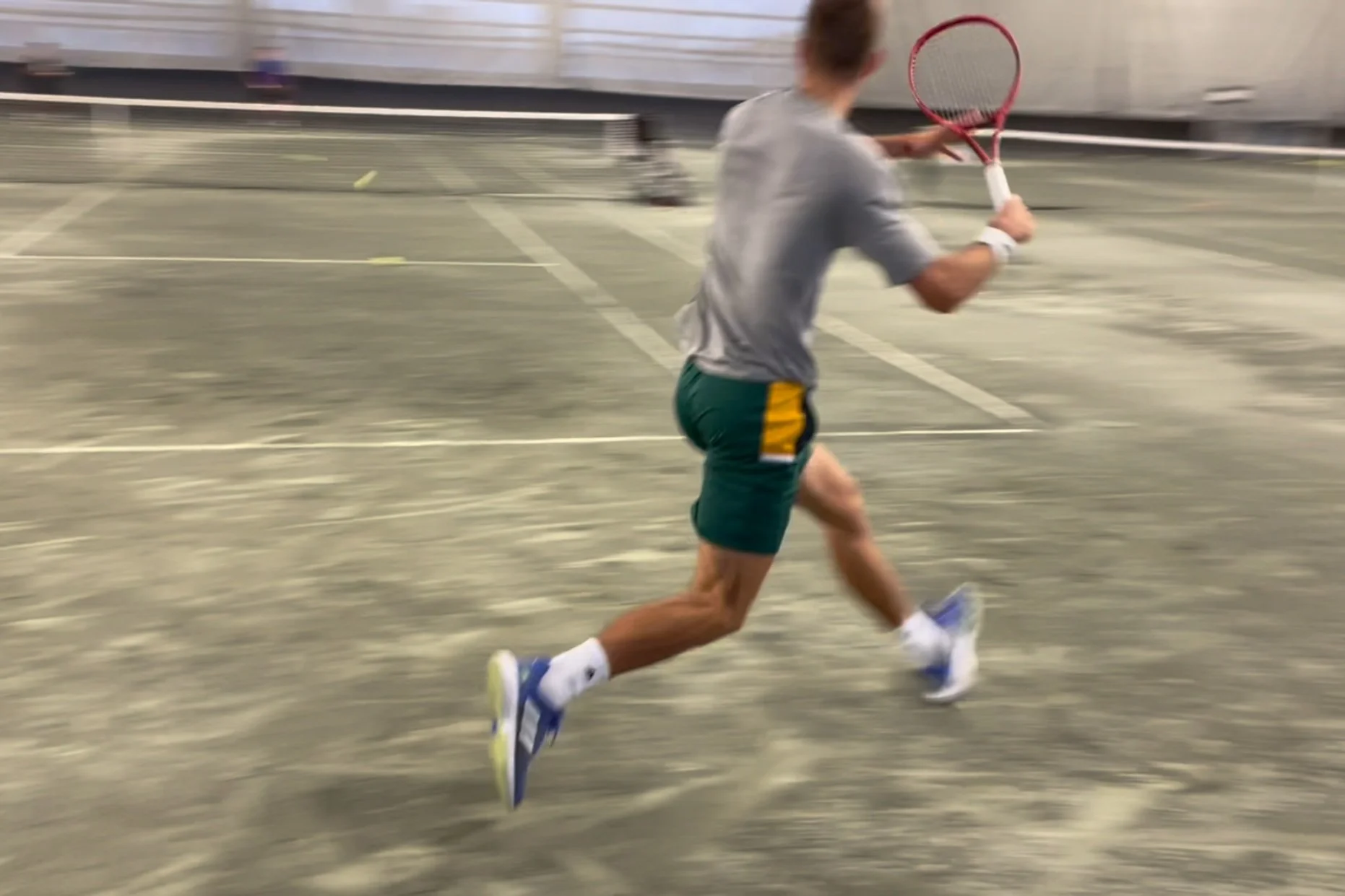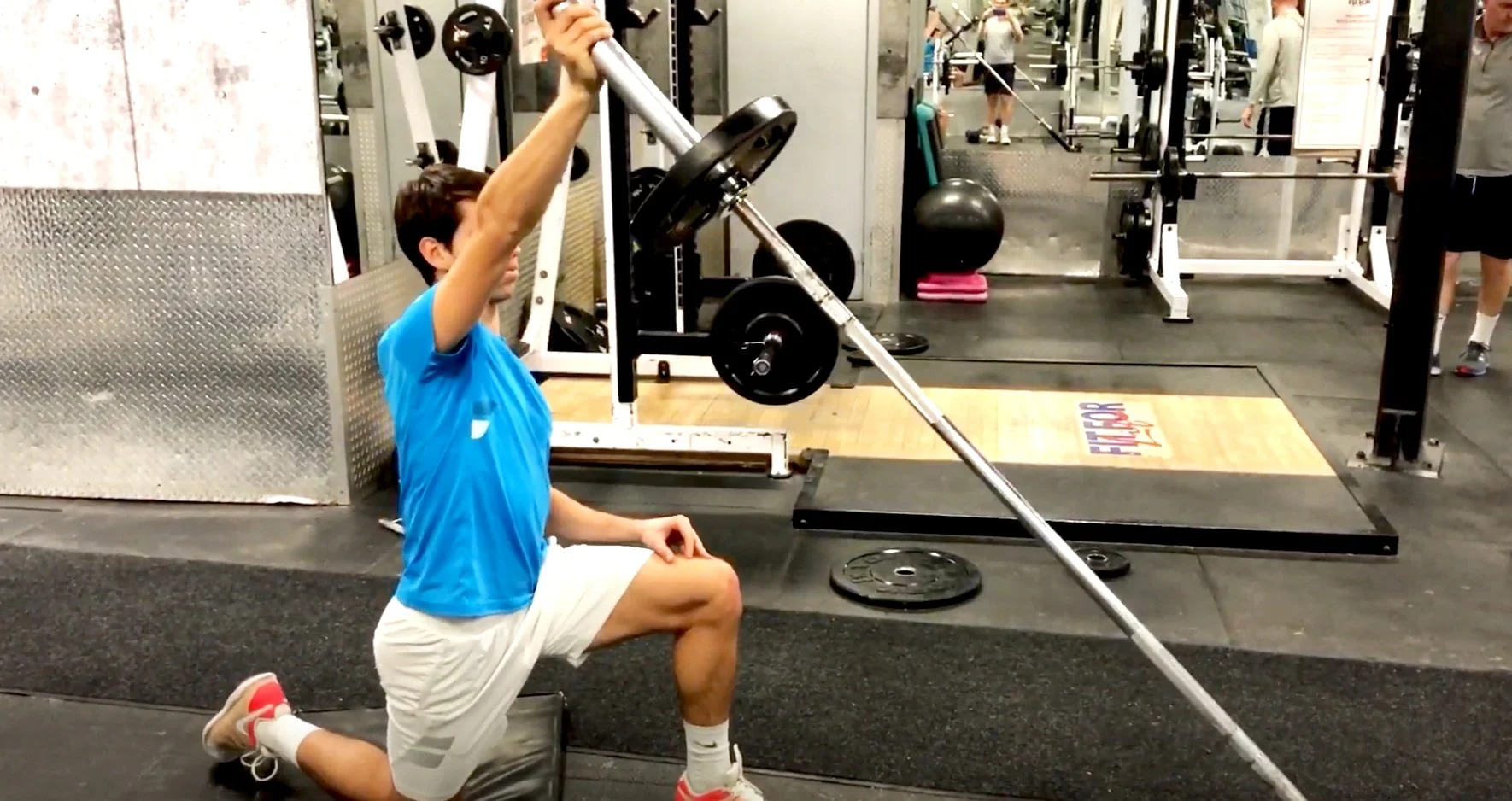Have you ever hit a serve where everything just seemed to come together? You felt coordinated. Powerful. The ball came off your racquet like a rocket.
On the flip side, we’ve all hit serves that felt off-balanced. Off-centered. Lacked pop. And landed everywhere but the service box.
Many in tennis associate shoulder health with resistance band exercises. Listen to coaches and trainers talk about shoulder strength or injury prevention with their players and you’ll surely hear things like “are you using your bands daily?” or “make sure to do ‘x’ or ‘y’ band exercise”. But do band exercises work in the manner that they’re spoken about?
I’d like to offer my take on the matter and suggest 2 other strength training methods - light weight and moderate/heavy strength exercises.
A little while back, I wrote a post highlighting the need to serve earlier in practices - check out that article here.
I also discussed this on the BTS podcast with PhD in Sport Science, Jaime Fernandez, who recently published a research paper on this exact topic. His conclusion - serving should happen at some point in the first half of a tennis practice AND NOT at the very end of a session. This will benefit players both from a development standpoint and from an injury mitigation point of view.
Most of us in tennis won’t argue that today’s game requires high levels of explosive strength - or as it’s often called - power. But many disregard some of the most influential exercises that contribute to this quality: olympic weightlifting movements.
In case you’re not familiar with olympic weightlifting movements, they consist of the clean, snatch, jerk and any variations or derivatives of these 3 lifts (videos examples are found throughout this post).
The serve is arguably the most important stroke in tennis - and the one in which players have the most control over. In today’s game, speed is a primary factor for players aiming to develop a potent service weapon. While I personally don’t believe speed is the only strategy of choice on the serve, it’s hard not to see value in gaining velocity on this stroke.
When looking at increasing serve speed, we should consider what it is that enables players to add considerable miles per hour. In other words, what qualities does serve speed (we’re talking first serve here), consist of? Is it strength? Flexibility? Balance?
Are you familiar with the ‘10,000 hour rule’? Many of you probably are. If you’re read Malcolm Gladwell’s book, ‘Outliers’, then you definitely are. The premise goes like this; practice something a lot - 10,000 hours, or about 10 years - and you’ll develop expertise in that particular domain. It sounds simple doesn’t it. But is it truly so? Many of us, or our students, have played tennis for well over 10 years, but I wouldn’t necessarily start calling ourselves ‘experts’. Now we might be pretty good, but expertise, as defined by researchers in this field, means far more than just ‘pretty good’ or even ‘really good’.
Most tennis players spend hours on the practice courts. And for good reason - tennis is darn tough. The question is, are these hours on court productive hours or redundant? How can we know? To assess whether our training is effective (and that it'll transfer to matchplay) we must first understand the demands of elite tennis.
In this post, we’ll review a study by Pereira et al (2016) that dives into the movement details of professional tennis. Other studies have previously analyzed movement characteristics; but, those studies replaced tournament matches with simulated matchplay. The present study observed movement characteristics via official ITF sanctioned matches.
For many in the tennis world, this time of the year means tournaments, and lots of them. Players from all over are either preparing or competing in ITF Futures events, open tournaments and club matches. With that in mind, I thought it’d be interesting to take a look at a typical training week for players competing in weekend events/matches. Good news is, Dariusz Lipka (former 1000 ranked ATP player) was in town this past week to train & compete in an open event - a mini preparation block for his upcoming Futures circuit this summer.
Last week, we looked at the importance of a post-match recovery routine for the tennis shoulder. This is based on a couple key factors. First, the current trend of modern tennis is heavily reliant on successful serving. And second, scientific evidence points to losses in both range of motion (ROM) and strength, along with shoulder/arm soreness, post matchplay. If you haven't read that post, take a look at it here as it helps provide the framework for this week's follow-up article.
Picture this, you just got off court after a long 3-set battle. You’re tired, exhausted, fatigued (insert any other word you wish). The last thing you want to do is spend another 30 minutes or more recovering from the match. But guess what, if you’re a junior who’s playing another match the same day or a pro playing a match the following day, you’ve got no other choice. Well that’s not entirely true, you do have another choice and that’s to do nothing at all and basically just show up for your next match.
BOTH Andy Murray and Novak Djokovic have been in the news of late with elbow injuries. While Novak is back competing, Andy is still on the sidelines with a suspected "tear" around the elbow (no further details have been mentioned). Both missed the Miami Open this year and while they'll likely be back in form soon, I thought it was a good time to discuss why elbow injuries happen and some ideas on what we can do about them.
A fairly recent retrospective study from Sports Health: A Multidisciplinary Approach analyzed serve volume in professional and junior tennis players. The researchers sought out to find how many serves are hit in a set (and match) by pros and juniors. The aim of the study was to use this serve data to develop an interval serve & groundstroke training program for elite tennis players. Although others have attempted to devise this type of program for tennis players, this is the first to my knowledge that has looked at more recent serve data while at the same time developing a program that took into account intensity (as a % of max speed) rather than just volume (i.e. number of serves).
There’s no argument that the first serve is quite important on both the men’s and women’s tours. The percentages speak for themselves - the top servers on tour win about 3 out of every 4 points when the first one goes in and only about half the points when they miss the first serve. Those are the stats. And although spin, direction, patterns etc. have a lot to do with that, it seems that the bigger your serve, the more points you win.
Which brings me to the focus of this article. I recently started a 6-week pilot study to see if an overload throwing program can improve serve speed. More specifically, I’ll be throwing a weighted ball (similar to a medicine ball only smaller) twice per week and tracking serve speed on a weekly basis.













